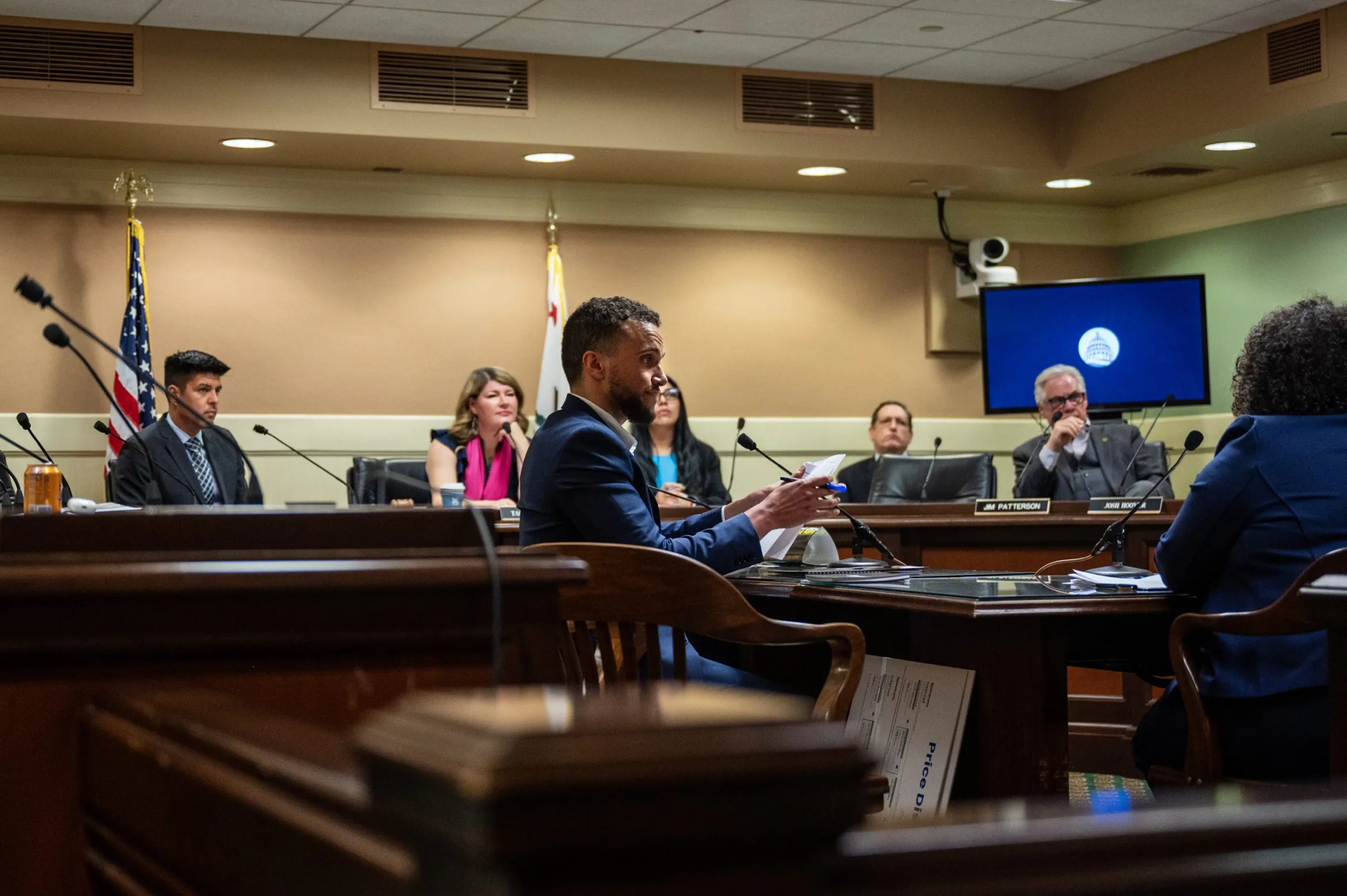Can a California bill end digital discrimination?
Low-income residents and people of color are disproportionately disconnected to broadband.
by Vanessa Flores April 22, 2024
Patrick Messac, director of Oakland Undivided, testifies before the Committee on Communications and Conveyance at the Capitol on April 20, 2024.
Credit: Hiram Alejandro Durán for El Tímpano/CatchLight Local/Report for America corps member
Paula Sandoval finds herself without access to the internet at home despite living in the digital age. Sandoval, a 65-year-old immigrant, lives in a rented room in Oakland. When she tried to set up internet access herself, she was met with a $50 quote from her mobile carrier, T-Mobile—a cost she says is unaffordable for her. Her situation mirrors that of many Californians, a state where one in five people lack broadband internet service.
Sandoval, who is a part-time student at Laney College, did ask her carrier about options for low-income people, and was told that she could qualify if she had school-aged children in her household, which she does not. “I live alone, I support myself, I work for myself, no one helps me,” she explained in Spanish.
EN SÍNTESIS
En California, una de cada cinco personas no tiene acceso a servicios de internet. Para abordar esta brecha, que afecta de manera desproporcionada a comunidades de color, activistas por la equidad digital piden la aprobación del proyecto de ley AB 2239, que incluiría medidas contra la discrimación de parte de los proveedores de servicios. El Tímpano habló con inmigrantes que no tienen acceso a internet y con quienes trabajan para ayudarlos a conectarse.
Digital equity advocates are rallying behind legislation intended to close the digital divide in California, AB 2239. If passed, the law would make California the first state to establish measures to prevent and remedy digital discrimination, a term used to describe when internet providers treat consumers differently based on their income level, race, ethnicity, color, religion or national origin.
“Californians that live in areas with predominantly low-income residents and people of color are disproportionately disconnected,” said Assemblymember and bill author Mia Bonta, while presenting in Sacramento at an April 10 Assembly Communications & Conveyance Committee hearing. “In light of the increasing reliance on digital technologies for education, work, healthcare and communication, it is imperative that we prevent digital discrimination and promote fairness in access to essential services,” she added.
Getting Connected
Studies across the state have shown that families living in low-income neighborhoods contend with worse internet performance than those in wealthier neighborhoods or get lower speeds for the same price.
Oakland Undivided, an internet advocacy nonprofit and a sponsor of AB 2239, Hubble IQ, a technology performance company, and Oakland Unified School District studied the quality disparities in the city. They found that connections in the highest-income zip code—with the largest population of white residents—were nearly ten times faster than in the poorest zip code, with the city’s largest population of people of color.
How El Tímpano’s listening powered this story
Earlier this month, El Tímpano informed 4,000+ community members that the Affordable Connectivity Program (ACP), which offers eligible households discounts on their monthly internet bill, will end on April 30. We asked community members about their internet usage and how the end of the program would affect them. Out of the 47 people who responded, Paula Sandoval was one of the few who reported having no access to the internet at all. Others who did have internet access described the cost as a burden.
Neighborhoods in the 94621 zip code, where the lowest median household income is $54,000, had a median internet speed of 15 megabits per second (mbps), while those living in neighborhoods in the 94618 zip code, where the highest median household income is $220,000, had an average speed of 97 mbps.
Chinese for Affirmative Action, a San Francisco-based advocacy organization, studied 105 addresses for internet pricing and speeds in San Francisco and found that AT&T, one of the largest internet service providers in the city, charged high-poverty addresses the same amount for slower plans compared to faster plans in low-poverty addresses.
“A lot of people assume that in low-income communities, people pay less,” said Patrick Messac, director of Oakland Undivided. “But this is actually not the case.”
Over a two-month time period, Oakland Undivided studied internet speeds for more than 18,000 students and their families throughout Oakland. The study found that 52% of the students fell into the “unserved” category at least once, which meant that their internet speeds were below 25 mbps. These students lived in communities like West Oakland, Fruitvale, and East Oakland.
“By telling certain kids that you’re not deserving of it [internet], that your zip code doesn’t deserve to have that access, you’re really just excluding them from everything,” said Bryce Hunt, a student from the Oakland Youth Commission, who is advocating for the bill.
Financial Help
The number one barrier to internet access at home is cost, Messac said. “For many families, internet is essential, but it’s unaffordable.”
Financial assistance for people like Sandoval does exist but isn’t easy to access, as her experience suggests.
According to a January 2023 analysis by the Public Advocates Office at the California Public Utilities Commission, some of the major broadband providers offer low-cost plans to qualifying low-income households in California, but there are still barriers to accessing those plans.
Enrollment in various government assistance programs may be required to establish eligibility for some plans, while others require not only participation in a government program for low-income people (such as CalFresh) but also require that qualifying households include at least one child that attends a K-12 school.
In many ways, the pandemic may end up worsening the digital divide. It took a trend towards things moving online, and it sent it into hyper speed.
PATRICK MESSAC, OAKLAND UNDIVIDED
In 2021 amid the COVID-19 pandemic, United States Congress launched the Affordable Connectivity Program (ACP) to help qualifying families with up to $30 per month toward internet service and up to $75 per month for households on qualifying Tribal lands. However, on February 7, 2024, the program stopped accepting new applications and enrollments because the $14.2 billion Congress initially allocated to the program had been depleted.
In Oakland, more than 27,000 households are currently enrolled in the ACP, according to Messac.
Many of those don’t know that their assistance is ending. “We’ve called several hundred families that we know are enrolled in the ACP, and only about half of them knew that this would mean that their bills would go up by $30 a month in May,” Messac said. “We’re really concerned that folks are not ready for this.”
Tech Exchange, a nonprofit that helps the community with access to low-cost computers and affordable internet, tech literacy and more, has expanded its services outside of its Oakland headquarters to reach more families in need.
The expansion to provide services in a pop-up shop style to cities like Richmond, Pittsburg, San Francisco, San Jose and Solano County was due to a growing demand, and the organization is now able to provide more technical support and help sign people up for internet services, said Kemish Rosales, the TecHub manager at Tech Exchange.
“We see a lot of folks who visit us who don’t have internet because they either can’t afford it or they don’t know some of the options available,” Rosales said.
What’s Next
The Judiciary Committee will consider AB 2239 on April 23.
Meanwhile, unless Congress acts, April will be the final month of assistance for those who count on the ACP to lower the cost of their internet service.
In a letter to congressional leaders earlier this month, Federal Communications Commission Chairwoman Jessica Rosenworcel urged immediate action before ACP ends, noting that more than 23 million households nationwide, including vulnerable seniors, veterans, school-aged children and residents of rural and Tribal communities, count on it to get and stay online.
“In many ways, the pandemic may end up worsening the digital divide,” said Messac. “It took a trend towards things moving online, and it sent it into hyper speed.”

